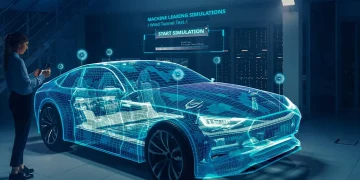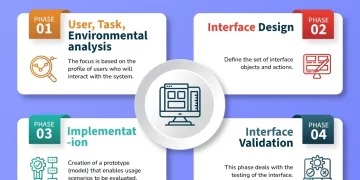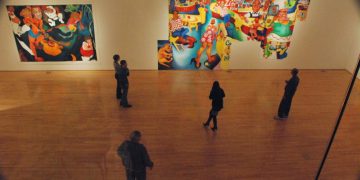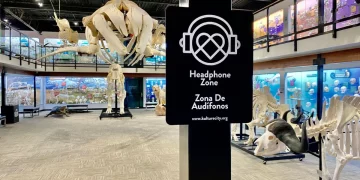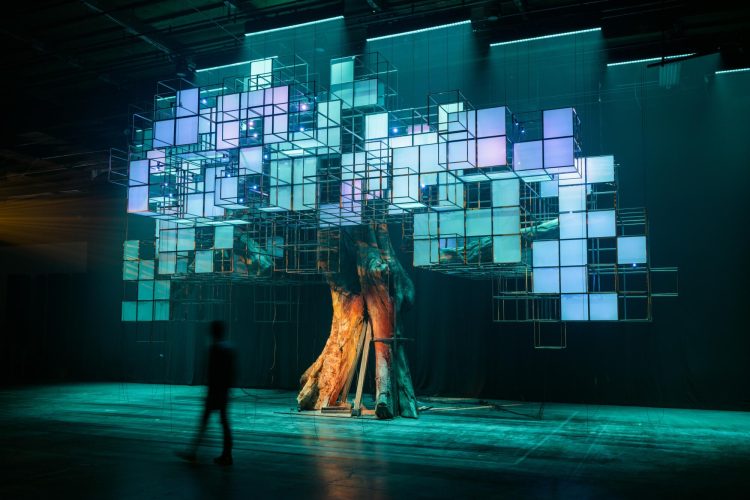In a world driven by technology, sensory overload, and constant stimuli, the traditional exhibition format is rapidly evolving. Museums, galleries, and pop-up art installations have transformed from passive viewing experiences into immersive environments designed to captivate, engage, and transport audiences. But what exactly makes an exhibition truly immersive?
The Concept of Immersive Exhibitions
At its core, an immersive exhibition isn’t just about the art or objects on display—it’s about creating an experience that envelops the audience, often stimulating multiple senses. The goal is to pull visitors into the environment and make them feel as though they are part of the artwork or concept, not just observers. It’s about breaking down the barrier between viewer and exhibit, creating a space where one can interact, explore, and even become a part of the narrative.
1. Interactive Technology: The Digital Revolution in Immersion
One of the defining features of immersive exhibitions is the integration of cutting-edge technology. Interactive displays, augmented reality (AR), virtual reality (VR), and projection mapping are transforming how we experience exhibitions. By using these tools, curators can create dynamic and adaptive environments that respond to the movements and actions of the viewer.
Take, for example, the “Rain Room” at the Barbican Centre in London, where visitors walk through a simulated downpour without getting wet, thanks to advanced motion sensors and carefully coordinated technology. The combination of art and technology allows the audience to physically interact with the environment, making them an active participant in the experience.
2. Multi-Sensory Engagement: Beyond the Visual
While visuals remain the primary medium for conveying artistic expression, immersive exhibitions often go beyond the realm of sight. Sound, smell, touch, and even taste can be incorporated to enhance the experience. When all five senses are engaged, the exhibition becomes a holistic experience, making the viewer feel fully immersed in the environment.
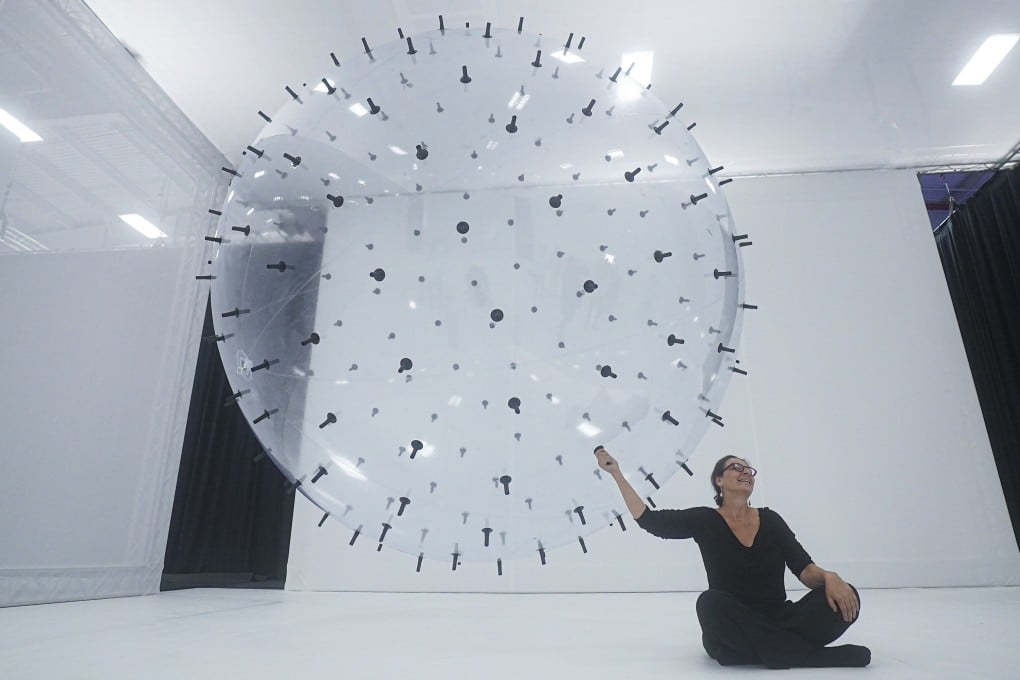
For instance, in the “Van Gogh: The Immersive Experience,” not only are visitors surrounded by vibrant projections of Van Gogh’s masterpieces, but the ambient sounds and scents of the era—like the smell of fresh flowers or the sound of a Parisian café—further enhance the feeling of immersion. This multi-sensory approach connects with viewers on a deeper emotional level, making the art come to life in a way that static displays simply cannot achieve.
3. Narrative-Driven Environments: Telling Stories Through Space
Immersive exhibitions often rely on strong narratives to engage their audiences. Storytelling is a powerful tool that can guide visitors through a journey, transforming a collection of objects into a coherent experience. These exhibitions often employ spatial design, lighting, soundscapes, and even live performances to weave a tale that unfolds as the viewer progresses through the space.
Consider the “Journey Through the Universe” exhibition at the American Museum of Natural History. As visitors walk through, they are gradually transported from the Earth’s atmosphere into deep space. The exhibition uses the vastness of the space, along with dynamic sound and lighting, to evoke a sense of wonder and awe. This narrative-driven approach allows visitors to engage emotionally, not just intellectually, with the subject matter.
4. Spatial Design: The Art of Creating Immersive Spaces
The layout of an immersive exhibition plays a crucial role in shaping the visitor’s experience. Designers use space creatively to guide the flow of movement, create moments of surprise, and evoke emotions. The key is to create environments that feel alive—spaces that encourage exploration and discovery.
One excellent example is the “Horyuji Temple Exhibition” in Japan, where traditional Japanese architecture was carefully reconstructed to create a space where visitors could experience ancient artifacts in their original context. The spatial design of the exhibition allowed visitors to physically move through the space in a way that encouraged deep interaction with both the environment and the objects on display.
Additionally, the use of lighting can significantly impact the atmosphere. Soft, moody lighting can evoke mystery, while bright, stark lighting can create a sense of clarity and focus. The right balance of lighting can direct attention to key pieces and amplify the overall experience.
5. Emotional and Psychological Impact: The Power of Immersion
At its best, an immersive exhibition creates a deep emotional and psychological impact. It taps into the viewer’s subconscious, allowing them to process and reflect on the experience in a more personal way. When the environment is fully immersive, it often evokes a strong sense of presence—almost as if the visitor has stepped into a new world.
Exhibitions that tackle emotionally charged subjects, like the “Holocaust Museum” in Washington, D.C., use immersive elements to engage visitors on an emotional level. The stark, quiet spaces, combined with haunting visuals and artifacts, transport the viewer into the gravity of the historical moment, encouraging deep reflection and empathy.

6. Collaboration and Community: Collective Experiences
Immersive exhibitions also shine when they foster a sense of community. Many modern exhibitions are designed for shared experiences, where visitors interact with each other as much as with the environment. This sense of collaboration can be especially powerful in interactive installations where groups of people are encouraged to work together to complete a task or experience the exhibit from different perspectives.
The “Meow Wolf” experience, for example, is designed to be explored in groups, with each individual uncovering different aspects of the narrative. This encourages conversation, shared discovery, and an organic sense of collective engagement.
7. Personalized Experiences: Tailoring the Visit to the Viewer
One of the most exciting advancements in immersive exhibitions is the ability to personalize the experience. With the aid of wearable technology, mobile apps, and sensors, exhibitions can now adapt to the individual viewer’s preferences and actions. This level of personalization enhances the feeling of immersion by tailoring the narrative to suit the viewer’s interests and interactions.
A perfect example is the “Dark Universe” exhibition at the Hayden Planetarium, where visitors can use augmented reality devices to explore space in a personalized way. The experience responds to their gestures, providing real-time feedback based on their choices. This creates a sense of ownership and agency, further immersing the viewer in the experience.
8. Inclusivity and Accessibility: Designing for All
To make an exhibition truly immersive, it must also be inclusive and accessible. This includes designing for people with disabilities, such as providing tactile guides for the visually impaired, creating hearing assistance devices for the hearing impaired, or ensuring that exhibits are wheelchair accessible.
In fact, some of the most powerful immersive exhibitions are those that cater to a wide range of audiences, ensuring that everyone, regardless of their abilities or backgrounds, can fully engage with the experience. By focusing on inclusivity, curators can create spaces where every visitor feels welcome and involved.
9. Temporary vs. Permanent Installations: The Impact of Time
While many immersive exhibitions are temporary, there is a unique appeal to permanent installations that maintain their sense of immersion over time. Temporary exhibitions tend to be more experimental, offering a one-of-a-kind experience that is ever-changing. On the other hand, permanent immersive installations, like the immersive experiences at places like the Louvre Abu Dhabi, provide a lasting environment where visitors can come back and experience the space over and over again, each time discovering new layers and details.
Conclusion: The Future of Immersive Exhibitions
The future of immersive exhibitions is boundless. As technology continues to evolve and creative minds push the boundaries of what is possible, the possibilities for immersive art will only grow. Whether through augmented reality, 360-degree projections, or multi-sensory environments, the idea of an exhibition as an experience rather than a passive observation is transforming how we engage with culture, art, and history.
Exhibitions are no longer about merely presenting objects; they are about creating spaces where people can actively engage, explore, and connect with the content. The power of immersion lies in its ability to engage the mind, stir the emotions, and leave an indelible mark on the viewer’s memory.
The future is immersive, and we are just beginning to scratch the surface.














